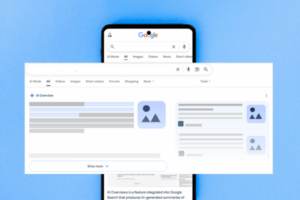 What is digital media buying? Digital media buying refers to paying for advertising on digital platforms including websites, social media, email, and more in order to generate brand awareness, increase lead generation, and/or help prospects navigate through your sales funnel.
What is digital media buying? Digital media buying refers to paying for advertising on digital platforms including websites, social media, email, and more in order to generate brand awareness, increase lead generation, and/or help prospects navigate through your sales funnel.
What is it for? Media buys, at their most basic level, are used as a source of lead generation. They are a way to introduce your brand or products to a large, captive audience in your target market.
They are generally used as an upper-funnel marketing initiative for brand recognition, awareness, and contact acquisition. However, media buys also function as an excellent resource to build remarketing lists or get your products and services in front of potential decision makers.
Who is it for? In general, media buying is used by companies looking to promote their brand, products, or services. Beyond that, the sky is the limit. Virtually any industry can leverage media buys to successfully generate leads that turn into customers.
5 Strategies to Optimize Your Media Buying Plan and Generate Qualified Leads
Now that we’ve got the basics out of the way, let’s dig into some of the strategies you can leverage today to build an effective media plan.
1. Walk Before You Run
Media buying is a marathon, not a sprint. If you are new to the game, you don’t want to bite off more than you can chew. Depending on the the types of media buys you purchase, there could be a considerable amount of overhead required to get things off the ground:
- You’ll need someone to oversee your media buy plan, determine the best strategy, and consistently optimize placements and coordinate with media partners.
- You’ll likely need creative and branding to support any educational resources to which you’re directing traffic, as well as any display or other digital ads. Watch out: If you’re including video, this could become a huge bottleneck.
- You’ll also need a content writer/copy editor to help write the content for your media buy ads and emails.
- If emails are part of your media plan, you’ll also need someone who can help you create that email in HTML as well as someone to help optimize it for conversions based on a combination of industry best practices and consistent testing.
The bottom line? If you’re going to invest in media buys, make sure you have the team and bandwidth to support it.
 2. Always Be Closing? No, Always Be Testing.
2. Always Be Closing? No, Always Be Testing.
As mentioned above, testing is another crucial component to an effective media buying strategy. Every single buy, down to the individual ad components, should be running some form of test.
- For display ads, you can test the creative, copy, layout, and placement of your branding, colors, image style, etc.
- For videos, test copy length, lifestyle vs. product-focused, lots of motion vs. a more static ad, when and where to add your branding, etc.
- For emails, test your subject line, preheader text, images vs. no images, long vs. short form copy, copy tone (FOMO vs. positive), etc.
Just make sure you come up with a hypothesis and a reason for the test. Nothing is worse than a test without a purpose!
3. Don’t Overreach or Overspend
One common challenge for media plans is successfully scaling what you already have. You can spend an incredible amount of time researching and developing a solid plan, but the truth is, you just don’t know how your audience will react to your brand, content, and creative until you test.
Another one of the most common media planning challenges is that marketers often feel they need to buy for an entire year with a certain partner in order to get a better rate.
Sure, you might save 10-20% by buying in bulk. But what happens when it stops performing?
Always make sure that you are proactively planning your budget. If you can plan in smaller segments to test and optimize, go for it. It will be much easier to get decision-makers in your company to sign off on a $100,000 budget for a quarter vs. a $350,000 budget for the year, (even if the latter does save money overall).
Focus on the now.
4. Know Your Objectives
Another common pitfall marketers make is not setting the proper goals, or even a goal at all.
If your plan is to throw some advertising against the proverbial wall and see what sticks, your media plan will fail. Additionally, if you optimize for the wrong metrics based on your goals, you will also fail.
If you’re simply looking for brand awareness and more eyeballs on your content and/or products, your metric for success should make sense. Measure upper-funnel engagement metrics like impressions, opens, and clicks; don’t measure qualified leads, sales opportunities, or closed customers here. Your campaigns will underperform and you will lose your budget.
Conversely, if your goals are further down the funnel, you need to focus on the quality of your traffic and the quantity of actual conversion events on your website or other outreach channels. If you focus too high in the funnel here, you’ll never see the impact of your media buys and will always be wondering, “What if?”
5. Be Ready to Pivot
Last, but most certainly not least, you must be adaptable. The speed of change in digital marketing can feel overwhelming at times, but it’s important to leave yourself room to pivot in the moment.
Sometimes, lists that perform exceptionally well will suddenly tank due to an algorithm change or replatform. Audience interest can wane quickly, and you will absolutely run into issues with list fatigue the longer you advertise with the same partner.
You need to constantly evaluate and reevaluate your performance. This is why it’s so important to have a flexible budget that allows you to pivot.
The most successful media buyers are those who are proactive, not reactive.
 Tying It All Together
Tying It All Together
Obviously, this barely scratches the surface in regards to media buying. Do you have more specific questions or concerns? Contact us and we’ll address your questions one-on-one.
Looking for more related content? Check our our recent educational resources for programmatic advertising (another form of media buying):


 2. Always Be Closing? No, Always Be Testing.
2. Always Be Closing? No, Always Be Testing.

